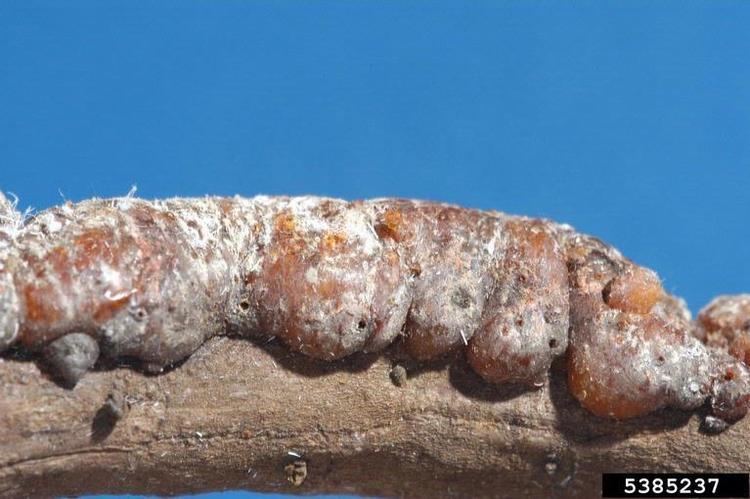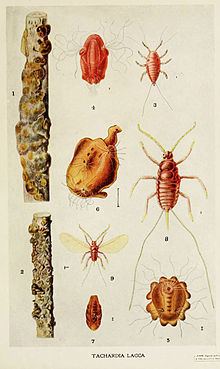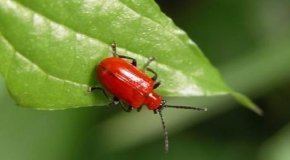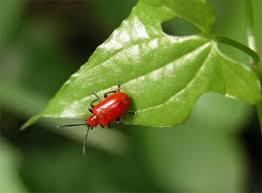Rank Species | Scientific name Kerria lacca Higher classification Kerria Order True bugs | |
 | ||
Similar Kerriidae, True bugs, Schleichera, Coccus, Dactylopius | ||
Kerria lacca cultivation in india
Kerria lacca is a species of insect in the family Kerriidae, the lac insects. These are in the superfamily Coccoidea, the scale insects. This species is perhaps the most commercially important lac insect, being a main source of lac, a resin which can be refined into shellac and other products. This insect is native to Asia.
Contents
- Kerria lacca cultivation in india
- Kerria lacca kusmi matured male insects
- Biology
- Ecology
- Economy
- References
Kerria lacca kusmi matured male insects
Biology

K. lacca also produces a dye and a wax as natural secretions. The life cycle of this scale insect proceeds with the first instar of the larval stages, which are known as "crawlers". Larvae in this stage crawl along the branches of their host plants and feed on the phloem. As they pierce the branches to reach the phloem, they cover the holes with their wax secretions. This species is also one of several similar insects used to produce a strong red dye historically used to color wool and silk. The dye originates in the hemolymph of the insect; the fluid analogous to blood.

More than 400 host plants have been noted. Three are used for the majority of commercial cultivation of the insect: palas (Butea monosperma), kusum (Schleichera oleosa), and ber (Ziziphus mauritiana).

There are at least two strains of the insect that are characterized by aspects of their life cycle and their host plant preferences.
Ecology

Natural enemies of this species include several parasitoids, such as the parasitoid wasps Tachardiaephagus tachardiae and Coccophagus tschirchii. Predators include the moths Eublemma roseonivia and Holcocera pulverea. These moths can interfere with lac cultivation in India.
These insects, as well as many types of fungal pathogens, form an ecological web that is important to local biodiversity.
K. lacca has been reported as a pest insect. It is reared on ber trees (Ziziphus mauritania), but these trees are also cultivated for fruit, the Indian jujube. K. lacca sometimes invades Indian jujube orchards and degrades the fruit crop.
Economy
Millions of people are engaged in the farming of lac insects. At least half of lac production occurs in India, where about 20,000 metric tons of raw lac are produced annually. It is a versatile product used in a wide array of applications, and demand for it in many industries provides economic resources that filter down to rural tribes. In Vietnam, the introduction of K. lacca cultivation has brought economic recovery to impoverished mountain villages and has helped to revegetate deforested hillsides. Demand, while still strong, is shrinking over time, reducing the economic viability of lac growing.
While K. lacca is the most commonly cultivated species in many areas, the related K. yunnanensis is the most widely used species in China.
